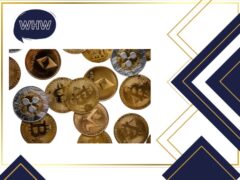Cracking the 401(k) code: how to maximize your retirement savings

If you’re working in the U.S., you’ve probably heard the term “401(k),” but do you really know what it means or how powerful it can be for your financial future?
A 401(k) isn’t just a confusing number thrown around by financial planners, it’s a tool designed specifically to help you build wealth for retirement, offering valuable tax advantages along the way.
Yet, despite these clear benefits, many Americans aren’t fully leveraging their 401(k) plans, leaving significant money on the table each year.
In this guide, we’ll decode exactly what a 401(k) is, clarify how it works, and share savvy tips to ensure you’re making the most of this powerful financial tool.
401(k) 101: understanding the basics
At its core, a 401(k) is an employer-sponsored retirement savings plan that allows employees to set aside a portion of their paycheck before taxes are taken out.
This pre-tax contribution reduces your taxable income today and allows your investments to grow tax-deferred until you withdraw the money during retirement.
Why is a 401(k) such a big deal?
The biggest advantage is the immediate tax break: contributions lower your current taxable income, reducing the taxes you pay today.
Plus, because the money is invested before taxes, it grows faster through compounded returns, setting you up for a stronger financial future.
Getting the most out of your 401(k)
Simply enrolling in your company’s 401(k) isn’t enough. To truly benefit, you need to actively manage your contributions and investments.
Never miss out on the employer match
One of the most significant benefits of a 401(k) is the potential for employer matching contributions.
Employers typically match your contributions up to a certain percentage—often between 3% and 6% of your salary, but this is not a fixed rule. The exact amount of the employer match can vary depending on the company and the specific 401(k) plan offered..
This is essentially free money added directly into your retirement fund, and missing out on this match is like turning down a raise.
Increase contributions gradually
Increasing your contribution percentage can seem daunting, but small, incremental changes each year can make it painless.
Consider bumping up your contributions by just 1% or 2% annually. Over time, these small adjustments can dramatically grow your retirement savings without noticeably impacting your take-home pay.
Traditional vs. roth 401(k): which should you choose?
Many companies now offer a Roth 401(k) in addition to the traditional option. Here’s how they differ:
- Traditional 401(k): Contributions are pre-tax, lowering your taxable income now, but you pay taxes when withdrawing the money in retirement.
- Roth 401(k): Contributions are after-tax, meaning no upfront tax benefit, but withdrawals during retirement are tax-free, including earnings.
Choosing between these two options depends largely on your current tax bracket and your expected financial situation in retirement.
Younger workers or those expecting higher income later might benefit from Roth contributions, whereas higher earners looking for immediate tax relief might prefer traditional.
Smart moves to maximize your contributions
Making regular contributions to your 401(k) is a solid start, but maximizing your savings requires strategic thinking.
To truly leverage the full potential of your 401(k), it’s crucial to adopt intentional strategies designed to accelerate your contributions and optimize your returns.
Small adjustments in your contribution habits today can dramatically amplify your financial security tomorrow, giving you peace of mind and the freedom to enjoy retirement on your terms.
Here are some smart moves to help you get there:
Aim to reach the annual limit
The IRS sets annual contribution limits for your 401(k). For 2025, the maximum contribution is $23,500, with an additional $7,500 catch-up contribution if you’re age 50 or older. The annual contribution limit for an IRA remains $7,000.
Striving to hit or approach these limits annually can drastically increase your retirement nest egg.
Automate contributions
Automatically deduct contributions from each paycheck to ensure consistency and discipline in your saving habits.
Automatic escalation features, offered by many employers, gradually increase your contribution rate each year without any extra effort.
Leverage bonuses or raises
If you receive a salary increase or bonus, consider directing part or all of it into your 401(k). This strategy boosts your retirement savings without impacting your standard of living since you’re allocating newfound money, rather than existing income.
Picking the right investments in your 401(k)
Your 401(k) usually offers various investment options, such as mutual funds, target-date funds, or index funds.
Embrace diversification
Diversifying your investments across stocks, bonds, and cash equivalents reduces overall risk and ensures you’re prepared for market fluctuations.
Consider target-date funds
Target-date funds automatically adjust the investment mix as you approach retirement, gradually shifting from aggressive investments to conservative options—perfect for those looking for a hands-off strategy.
Avoiding common 401(k) mistakes
Even seasoned savers can make errors that hurt their financial future:
Borrowing from your 401(k)
It might seem tempting to tap into your 401(k) for immediate financial needs, but doing so can significantly reduce your long-term wealth due to lost investment growth. Treat your 401(k) as untouchable unless you’re facing a severe financial emergency.
Neglecting fees
High management fees within your investment options can drastically reduce your returns over time. Always review and compare expense ratios of funds offered by your employer’s 401(k) provider.
Not reviewing your investments regularly
Failing to periodically check and adjust your 401(k) investments can lead to unnecessary risk or suboptimal returns.
Aim to rebalance your portfolio annually based on your age, risk tolerance, and market conditions.
Advanced 401(k) strategies for savvy investors
Already familiar with the basics? Here’s how to elevate your 401(k) strategy:
Backdoor roth conversions
High earners who exceed Roth IRA income limits can leverage a “backdoor” Roth strategy, converting after-tax contributions within a traditional 401(k) to a Roth 401(k). This approach provides tax-free growth, benefiting those who anticipate higher future tax brackets.
Combining 401(k) with IRAs
Pair your 401(k) with an IRA to further diversify and optimize tax benefits. Roth IRAs, for instance, allow tax-free withdrawals, complementing traditional 401(k) contributions nicely (IRA basics from IRS).
Avoiding hidden fees
Investment fees within your 401(k) can quietly erode your returns over the years:
- Expense ratios: Opt for low-cost index funds or ETFs when available.
- Administrative fees: Check if your plan charges administrative fees and how these affect your returns.
Utilize resources to stay informed
Staying well-informed is crucial when it comes to maximizing your retirement savings. Take advantage of available resources regularly—this means not just occasionally checking your account balance, but actively engaging with your financial planning.
Your employer’s HR department can clarify specific aspects of your plan, ensuring you fully understand the benefits available.
Additionally, retirement calculators can help you accurately forecast your retirement savings and make necessary adjustments early on.
For personalized, expert guidance, consider consulting a financial advisor who can offer tailored advice based on your individual financial situation and goals.
Act now to build your future!
The earlier and more strategically you approach your 401(k), the better prepared you’ll be when retirement rolls around.
Your financial future depends on your proactive efforts today. With a little planning, discipline, and strategic insight, your 401(k) can become one of your most powerful assets.
Don’t leave your financial future to chance. Maximize your 401(k) contributions today, and secure peace of mind tomorrow.
Your future self will thank you!
Related content

Building wealth through dividend stocks: your guide to financial freedom

Investing in Real Estate with Little Money: How Does It Work?

Investing with Little Money: How to Get Started Even on a Tight Budget

Debt Refinancing Loans: Is It Worth It?

Personal Loans: How to Choose the Best Option for Your Needs
